SFBC Recognition over Orthogonal Frequency Division Multiplexing Schemes in the Presence of Inphase and Quadrature Phase Discrepancies for Cognitive Radio Applications
Abstract
1. Introduction
1.1. Related Works
1.2. Novelty and Contributions
- We will design a novel SFBC recognition algorithm for deployment in OFDM networks when IQDs are present. Developing a channel estimator will be an integral service we will adopt to enable the recognition process.
- We will consider that IQDs will take place at both the transmitter and recipient. The overall channel taps will be determined by incorporating the effects of IQDs at both endpoints into the actual link paths.
- This work’s analytical investigation will illustrate that the exact maximum likelihood strategy in SFBC waveform recognition of OFDM systems will be too expensive for practical deployment. As a consequence, we will apply the expectation maximization algorithm as an innovative and cost-effective iterative technique.
- The proposed recognizer will leverage the a posteriori probabilities of the conveyed symbols provided by a channel control decoder to assess the a posteriori expectations of the broadcast symbols, which will be processed as if they are training data.
- It is consistent with any error control decoder mechanism that can determine the soft information of the broadcast symbols. This involves convolutional, turbo, and low density parity check decoders.
- It applies to any collection of SFBC signals, irrespective of the nature of their broadcast patterns, which include the number of transmit antennas and subcarriers employed in a space frequency block.
- It keeps up a reliable performance while maintaining the computational overhead within reasonable bounds.
2. System Structure and Problem Formulation
3. Proposed Recognition Algorithm
- Here, denotes each possible point in the modulation constellation . In reality, rather than relying on the mysterious supplied by the transmitter, the recipient utilizes to generate the matrix of . Moreover, because an interleaver is present, is efficiently calculated as .
- It has been noted that determining is essential for the suggested recognizer. This likelihood is determined from the decoder findings of any error control coding scheme that can establish soft representations. More information about this concern is provided in [39].
- Sending pilot symbols from the broadcaster to the destination provides the proposed estimator and recognizer with a starting point. With more known symbols, the original assessment becomes more accurate. Nevertheless, more known symbols means less power is accessible for information and implies more bandwidth is needed. Consequently, it is essential that there be as few known symbols as possible in comparison to data symbols. The offered expectation maximization method is effective for this purpose because it treats the results provided by the channel decoders as if they were already known symbols. This incrementally enhances the first estimate without adding more training symbols. Using a small number of training symbols while initializing the unknown data symbols at zero, we obtain first-order predictions of the uncertain variables. The suggested classifier is derived via a series of rounds that use the soft outputs given by the error control decoder to produce . It is well known that all contemporary decoding procedures produce a posteriori probabilities of the transmitted symbols for use in their iterative frameworks. The proposed recognition and estimation approach exploits these probabilities to produce expected values of the transmitted symbols, which are employed as if they were known symbols.
- By adopting a computational complexity analysis as stated in [26,33], we demonstrate that the count of floating point operations (flps) requested for a single iteration is represented byConsider , , , and a processor that runs at 10 Teraflps per second, then flps. This necessitates a computation time of 2.05 μs, which seems to be insignificant for real situations.
4. Simulation Results
5. Conclusions and Future Work
- The stated method makes use of the iterative nature of contemporary error control decoders. To be more precise, the soft information produced by the error control detector is leveraged in an iterative manner to enhance the estimation and recognition processes. Moreover, it can function with any detection process, as the detector is capable of computing the a posteriori probabilities of the information bits.
- The proposed algorithm can be utilized in place of many independently operating algorithms to predict the sender and receiver IQD parameters, to estimate the channel taps, and to recognize SFBC signals.
- It can be employed with any collection of SFBC signals, regardless of the form their transmission matrices may take.
- It keeps the degree of computational expenditure at a bearable level while maintaining an outstanding performance.
- The current recognition and estimation algorithm needs a quasi-static link over the emitted frame period. Modifying the algorithm to accommodate time-varying channels requires additional research.
- Additional exploration is required to develop SFBC recognition algorithms in the presence of other transmission impairments, such as frequency offsets and phase noise.
Author Contributions
Funding
Institutional Review Board Statement
Informed Consent Statement
Data Availability Statement
Acknowledgments
Conflicts of Interest
References
- Pathy, A.K.; Kumar, A.; Gupta, R.; Kumar, S.; Majhi, S. Design and Implementation of Blind Modulation Classification for Asynchronous MIMO-OFDM System. IEEE Trans. Instrum. Meas. 2021, 70, 5504011. [Google Scholar] [CrossRef]
- Huynh-The, T.; Nguyen, T.V.; Pham, Q.V.; da Costa, D.B.; Kim, D.S. MIMO-OFDM Modulation Classification Using Three-Dimensional Convolutional Network. IEEE Trans. Veh. Technol. 2022, 71, 6738–6743. [Google Scholar] [CrossRef]
- Liu, M.; Yang, K.; Zhao, N.; Chen, Y.; Song, H.; Gong, F. Intelligent Signal Classification in Industrial Distributed Wireless Sensor Networks Based Industrial Internet of Things. IEEE Trans. Ind. Inform. 2021, 17, 4946–4956. [Google Scholar] [CrossRef]
- Gupta, R.; Majhi, S.; Dobre, O.A. Design and Implementation of a Tree-Based Blind Modulation Classification Algorithm for Multiple-Antenna Systems. IEEE Trans. Instrum. Meas. 2019, 68, 3020–3031. [Google Scholar] [CrossRef]
- Marey, M.; Mostafa, H. Soft-Information Assisted Modulation Recognition for Reconfigurable Radios. IEEE Wirel. Commun. Lett. 2021, 10, 745–749. [Google Scholar] [CrossRef]
- Ivanov, A.; Tonchev, K.; Poulkov, V.; Manolova, A. Probabilistic Spectrum Sensing Based on Feature Detection for 6G Cognitive Radio: A Survey. IEEE Access 2021, 9, 116994–117026. [Google Scholar] [CrossRef]
- Marey, M.; Mostafa, H.; Alshebeili, S.A.; Dobre, O.A. Iterative Modulation Classification Algorithm for Two-Path Successive Relaying Systems. IEEE Wirel. Commun. Lett. 2021, 10, 2017–2021. [Google Scholar] [CrossRef]
- Qiao, J.; Chen, W.; Chen, J.; Ai, B. Blind Modulation Classification Under Uncertain Noise Conditions: A Multitask Learning Approach. IEEE Commun. Lett. 2022, 26, 1027–1031. [Google Scholar] [CrossRef]
- Hanna, S.; Dick, C.; Cabric, D. Signal Processing-Based Deep Learning for Blind Symbol Decoding and Modulation Classification. IEEE J. Sel. Areas Commun. 2022, 40, 82–96. [Google Scholar] [CrossRef]
- Marey, M.; Dobre, O.A. Blind Modulation Classification for Alamouti STBC System With Transmission Impairments. IEEE Wirel. Commun. Lett. 2015, 4, 521–524. [Google Scholar] [CrossRef]
- Chronopoulos, S.K.; Christofilakis, V.; Tatsis, G.; Kostarakis, P. Preliminary BER Study of a TC-OFDM System Operating Under Noisy Conditions. J. Eng. Sci. Technol. Rev. 2016, 9, 13–16. [Google Scholar] [CrossRef]
- Gupta, R.; Kumar, S.; Majhi, S. Blind Modulation Classification for Asynchronous OFDM Systems Over Unknown Signal Parameters and Channel Statistics. IEEE Trans. Veh. Technol. 2020, 69, 5281–5292. [Google Scholar] [CrossRef]
- Marey, M. Soft-Information Aided Channel Estimation With IQ Imbalance for Alternate-Relaying OFDM Cooperative Systems. IEEE Wirel. Commun. Lett. 2018, 7, 308–311. [Google Scholar] [CrossRef]
- Gao, Y.; Chen, Y.; Chen, N.; Zhang, J. Performance Analysis of Dual-Hop Relaying With I/Q Imbalance and Additive Hardware Impairment. IEEE Trans. Veh. Technol. 2020, 69, 4580–4584. [Google Scholar] [CrossRef]
- Cheng, H.; Xia, Y.; Huang, Y.; Yang, L.; Mandic, D.P. Joint Channel Estimation and Tx/Rx I/Q Imbalance Compensation for GFDM Systems. IEEE Trans. Wirel. Commun. 2019, 18, 1304–1317. [Google Scholar] [CrossRef]
- Cheng, X.; Yang, Y.; Li, S. Joint Compensation of Transmitter and Receiver I/Q Imbalances for SC-FDE Systems. IEEE Trans. Veh. Technol. 2020, 69, 8483–8498. [Google Scholar] [CrossRef]
- Mohammadian, A.; Tellambura, C. RF Impairments in Wireless Transceivers: Phase Noise, CFO, and IQ Imbalance—A Survey. IEEE Access 2021, 9, 111718–111791. [Google Scholar] [CrossRef]
- Marey, M.; Mostafa, H. Coded Assisted Transmit and Receive IQ Mismatch Compensation With Channel Estimation for AF Cooperative OFDM Systems. IEEE Access 2023, 11, 2118–2127. [Google Scholar] [CrossRef]
- Mohamed, S.E.-D.N.; Mortada, B.; El-Shafai, W.; Khalaf, A.A.M.; Zahran, O.; Dessouky, M.I.; El-Rabaie, E.M.; El-Samie, F.E.A. Automatic Modulation Classification in Optical Wireless Communication Systems Based on Cancellable Biometric Concepts. Opt. Quantum Electron. 2023, 55, 389. [Google Scholar] [CrossRef]
- Mohamed, S.E.D.N.; Mortada, B.; Ali, A.M.; El-Shafai, W.; Khalaf, A.A.; Zahran, O.; Dessouky, M.I.; El-Rabaie, E.S.M.; El-Samie, F.E.A. Modulation Format Recognition Using CNN-based Transfer Learning Models. Opt. Quantum Electron. 2023, 55, 343. [Google Scholar] [CrossRef]
- Mortada, B.; El-Shafai, W.; Zahran, O.; El-Rabaie, E.M.; El-Samie, F.E.A. Fan-beam Projection Based Modulation Classification for Optical Systems with Phase Noise Effect. J. Opt. 2023. [CrossRef]
- Ghanem, H.S.; Shoaib, M.R.; El-Gazar, S.; Emara, H.; El-Shafai, W.; El-Moneim, S.A.; El-Fishawy, A.S.; Taha, T.E.; Hamed, H.F.; El-Banby, G.M.; et al. Automatic Modulation Classification with 2D Transforms and Convolutional Neural Network. Trans. Emerg. Telecommun. Technol. 2022, 33, e4623. [Google Scholar] [CrossRef]
- Wu, Z.; Zhang, L.; Zhong, Z.; Liu, R. Blind Recognition of LDPC Codes Over Candidate Set. IEEE Commun. Lett. 2020, 24, 11–14. [Google Scholar] [CrossRef]
- Liu, P.; Pan, Z.; Lei, J. Parameter Identification of Reed-Solomon Codes Based on Probability Statistics and Galois Field Fourier Transform. IEEE Access 2019, 7, 33619–33630. [Google Scholar] [CrossRef]
- Eldemerdash, Y.; Marey, M.; Dobre, O.A.; Karagiannidis, G.K.; Inkol, R. Fourth-Order Statistics for Blind Classification of Spatial Multiplexing and Alamouti Space-Time Block Code Signals. IEEE Trans. Commun. 2013, 61, 2420–2431. [Google Scholar] [CrossRef]
- Marey, M.; Dobre, O.A.; Inkol, R. Classification of Space-time Block Codes Based on Second-order Cyclostationarity with Transmission Impairments. IEEE Trans. Wirel. Commun. 2012, 11, 2574–2584. [Google Scholar] [CrossRef]
- Marey, M.; Dobre, O.A.; Inkol, R. Cyclostationarity-Based Blind Classification of STBCs for Cognitive Radio Systems. In Proceedings of the IEEE International Conference on Communications, Ottawa, ON, Canada, 10–15 June 2012; pp. 1–6. [Google Scholar]
- Marey, M.; Dobre, O.A.; Liao, B. Classification of STBC Systems over Frequency-selective Channels. IEEE Trans. Veh. Technol. 2015, 64, 2159–2164. [Google Scholar] [CrossRef]
- Marey, M.; Dobre, O.A. Automatic Identification of Space-Frequency Block Coding for OFDM Systems. IEEE Trans. Wirel. Commun. 2017, 16, 117–128. [Google Scholar] [CrossRef]
- Choqueuse, V.; Marazin, M.; Collin, L.; Yao, K.; Burel, G. Blind Recognition of Linear Space Time Block Codes: A Likelihood-Based Approach. IEEE Trans. Signal Process. 2010, 58, 1290–1299. [Google Scholar] [CrossRef]
- Choqueuse, V.; Yao, K.; Collin, L.; Burel, G. Hierarchical Space-Time Block Code Recognition Using Correlation Matrices. IEEE Trans. Wirel. Commun. 2008, 58, 3526–3534. [Google Scholar] [CrossRef]
- Zhang, Y.; Yan, W.; Zhang, L.; Ma, L. Automatic Space-Time Block Code Recognition Using Convolutional Neural Network With Multi-Delay Features Fusion. IEEE Access 2021, 9, 79994–80005. [Google Scholar] [CrossRef]
- Marey, M.; Dobre, O.A.; Inkol, R. Blind STBC Identification for Multiple Antenna OFDM Systems. IEEE Trans. Commun. 2014, 62, 1554–1567. [Google Scholar] [CrossRef]
- Eldemerdash, Y.A.; Dobre, A.O.; Liao, J.B. Blind Identification of SM and Alamouti STBC-OFDM Signals. IEEE Trans. Wirel. Commun. 2015, 14, 972–982. [Google Scholar] [CrossRef]
- Marey, M.; Mostafa, H. STBC Identification for Multi-User Uplink SC-FDMA Asynchronous Transmissions Exploiting Iterative Soft Information Feedback of Error Correcting Codes. IEEE Access 2022, 10, 21336–21346. [Google Scholar] [CrossRef]
- Marey, M.; Mostafa, H. Power of Error Correcting Codes for SFBC-OFDM Classification Over Unknown Channels. IEEE Access 2022, 10, 35643–35652. [Google Scholar] [CrossRef]
- Marey, M.; Dobre, O.A.; Mostafa, H. Cognitive Radios Equipped With Modulation and STBC Recognition Over Coded Transmissions. IEEE Wirel. Commun. Lett. 2022, 11, 1513–1517. [Google Scholar] [CrossRef]
- Tarokh, V.; Jafarkhani, H.; Calderbank, A.R. Space-Time Block Codes From Orthogonal Designs. IEEE Trans. Inf. Theory 1999, 9, 1456–1467. [Google Scholar] [CrossRef]
- Marey, M.; Guenach, M.; Steendam, H. Code-Aided Channel Tracking and Frequency Offset-Phase Noise Elimination for Multi-Carrier Systems. IEEE Signal Process. Lett. 2008, 15, 657–660. [Google Scholar] [CrossRef]
- Lottici, V.; Luise, M. Embedding Carrier Phase Recovery Into Iterative Decoding of Turbo-Coded Linear Modulations. IEEE Trans. Commun. 2004, 52, 661–668. [Google Scholar] [CrossRef]
- Chronopoulos, S.K.; Christofilakis, V.; Tatsis, G.; Kostarakis, P. Performance of Turbo Coded OFDM Under the Presence of Various Noise Types. J. Wirel. Pers. Commun. 2016, 87, 1319–1336. [Google Scholar] [CrossRef]
- Gao, M.; Li, Y.; Dobre, O.; Al-Dhahir, N. Blind Identification of SFBC-OFDM Signals Based on the Central Limit Theorem. IEEE Trans. Wirel. Commun. 2019, 18, 3500–3514. [Google Scholar] [CrossRef]
- Gao, M.; Li, Y.; Dobre, O.A.; Al-Dhahir, N. Blind Identification of SFBC-OFDM Signals Using Subspace Decompositions and Random Matrix Theory. IEEE Trans. Veh. Technol. 2018, 67, 9619–9630. [Google Scholar] [CrossRef]
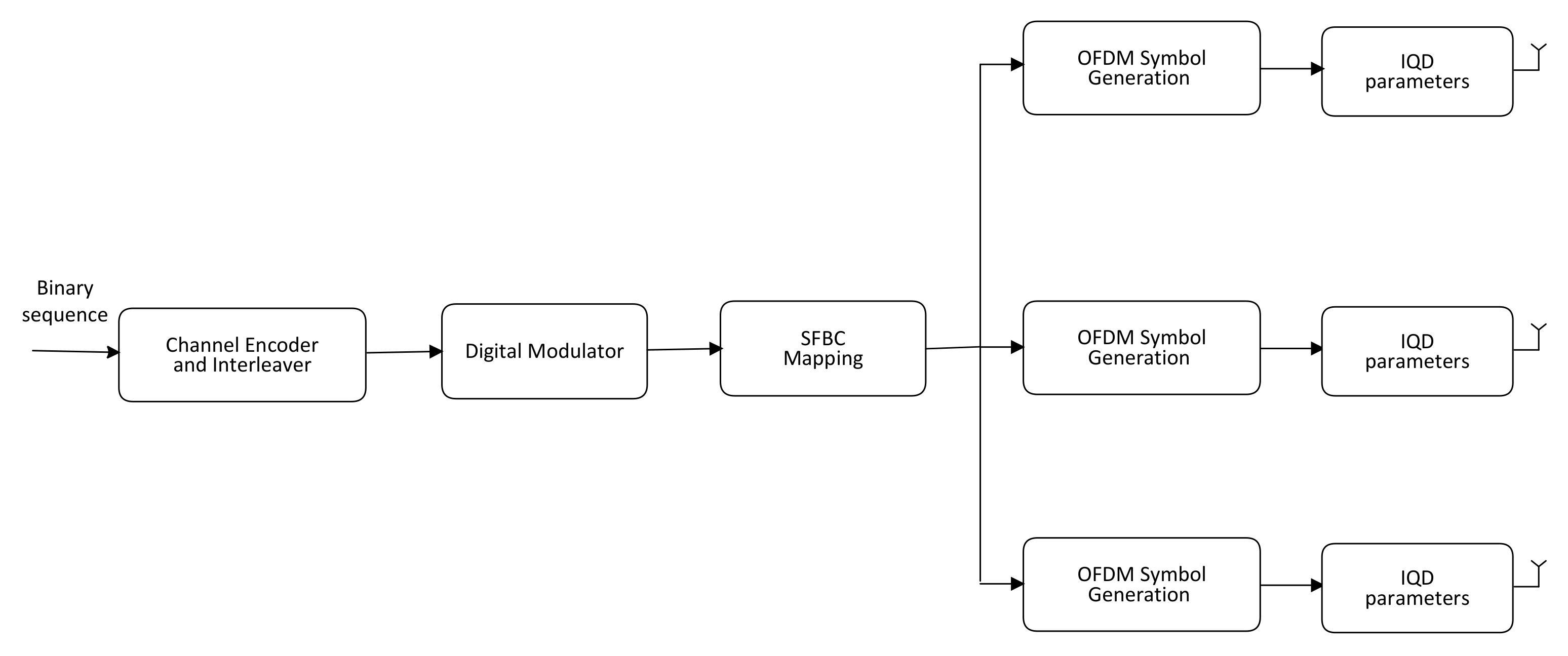

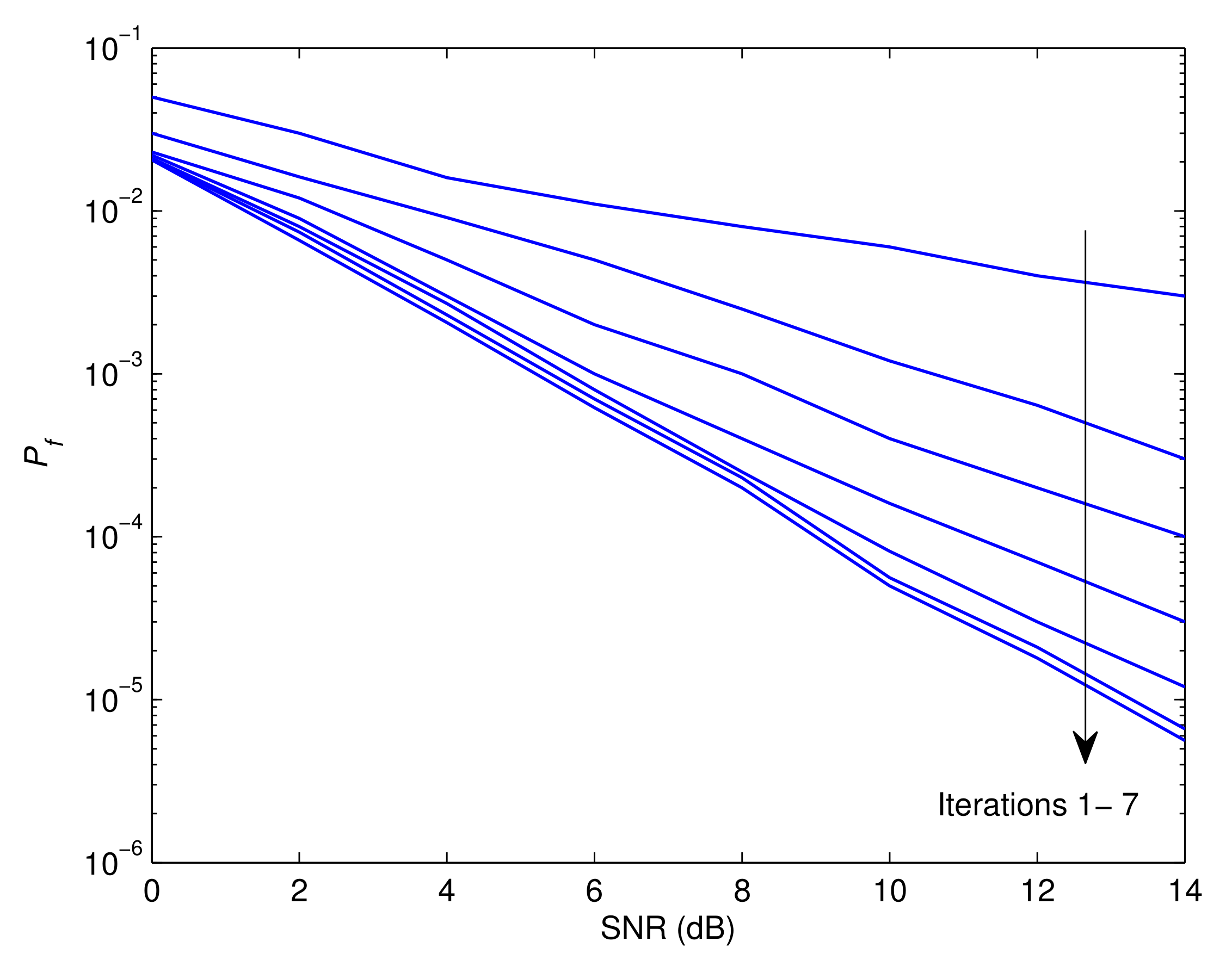
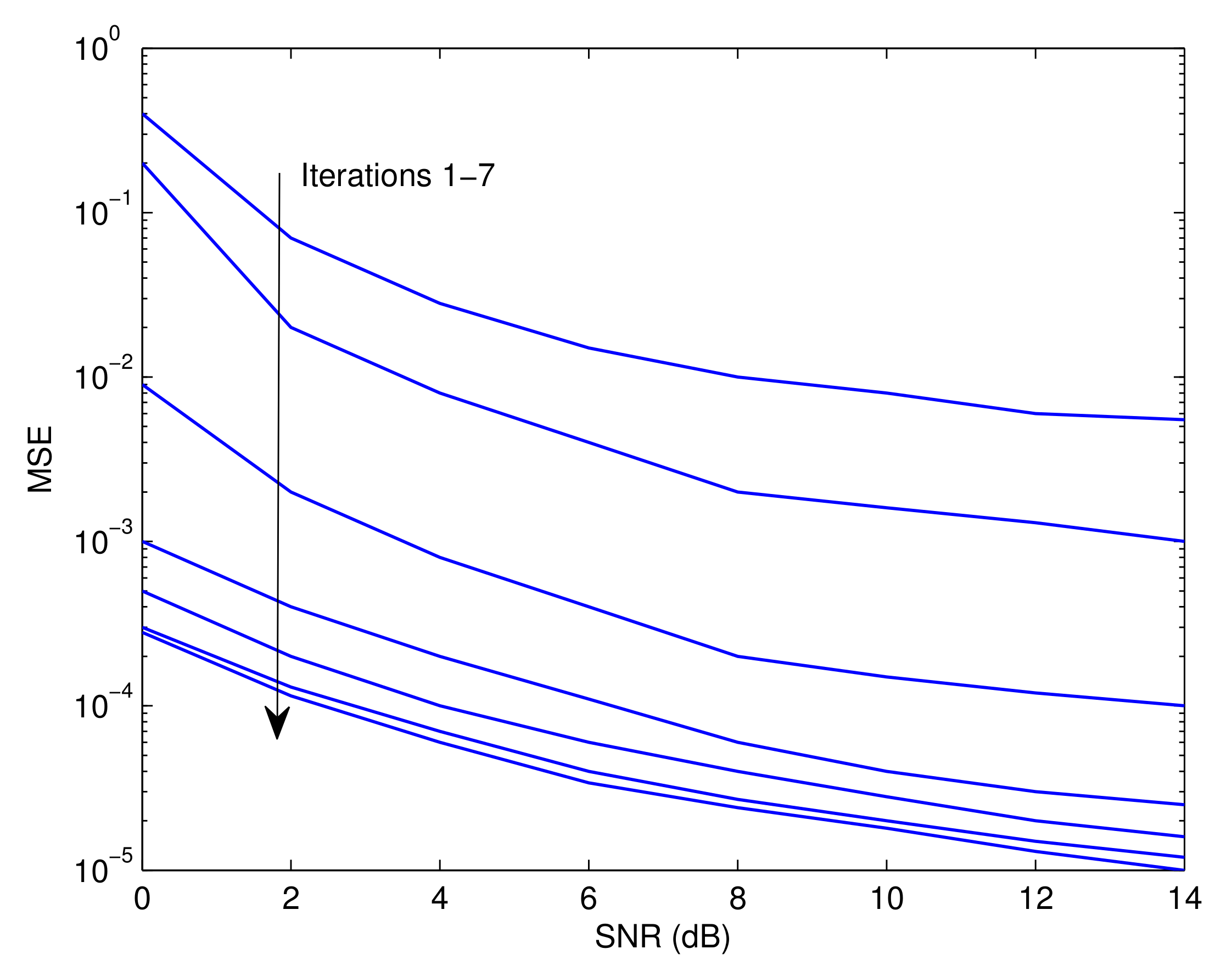
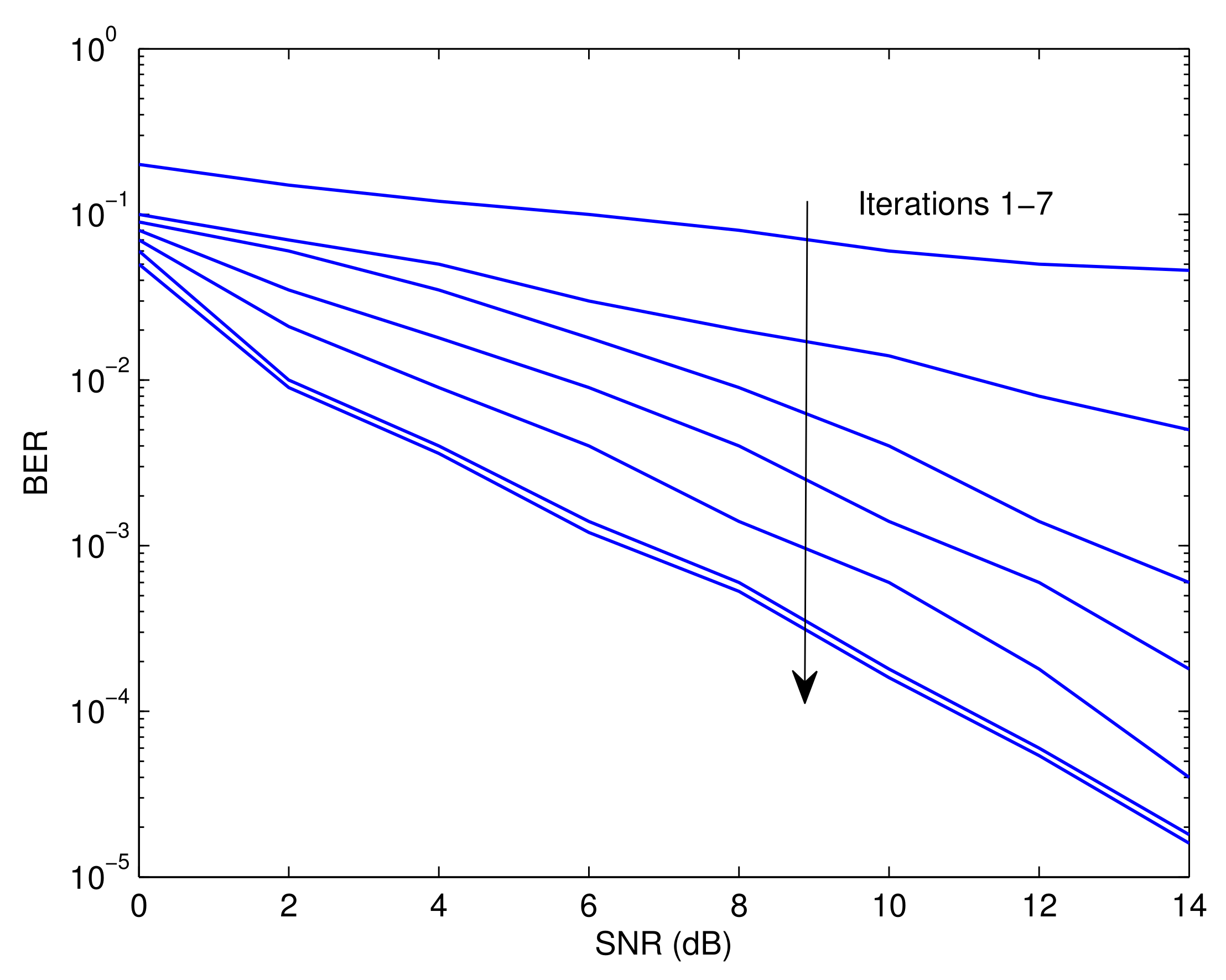
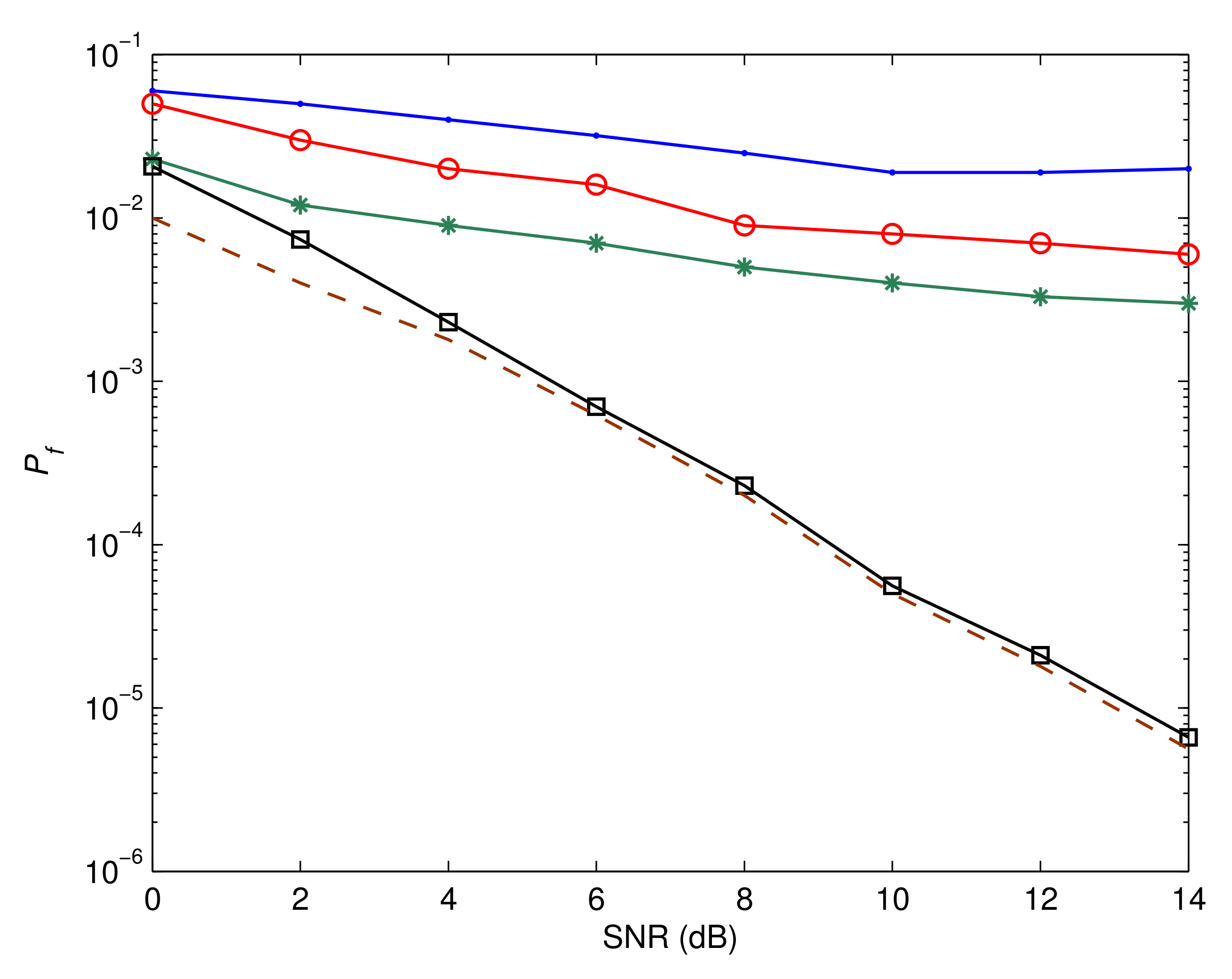
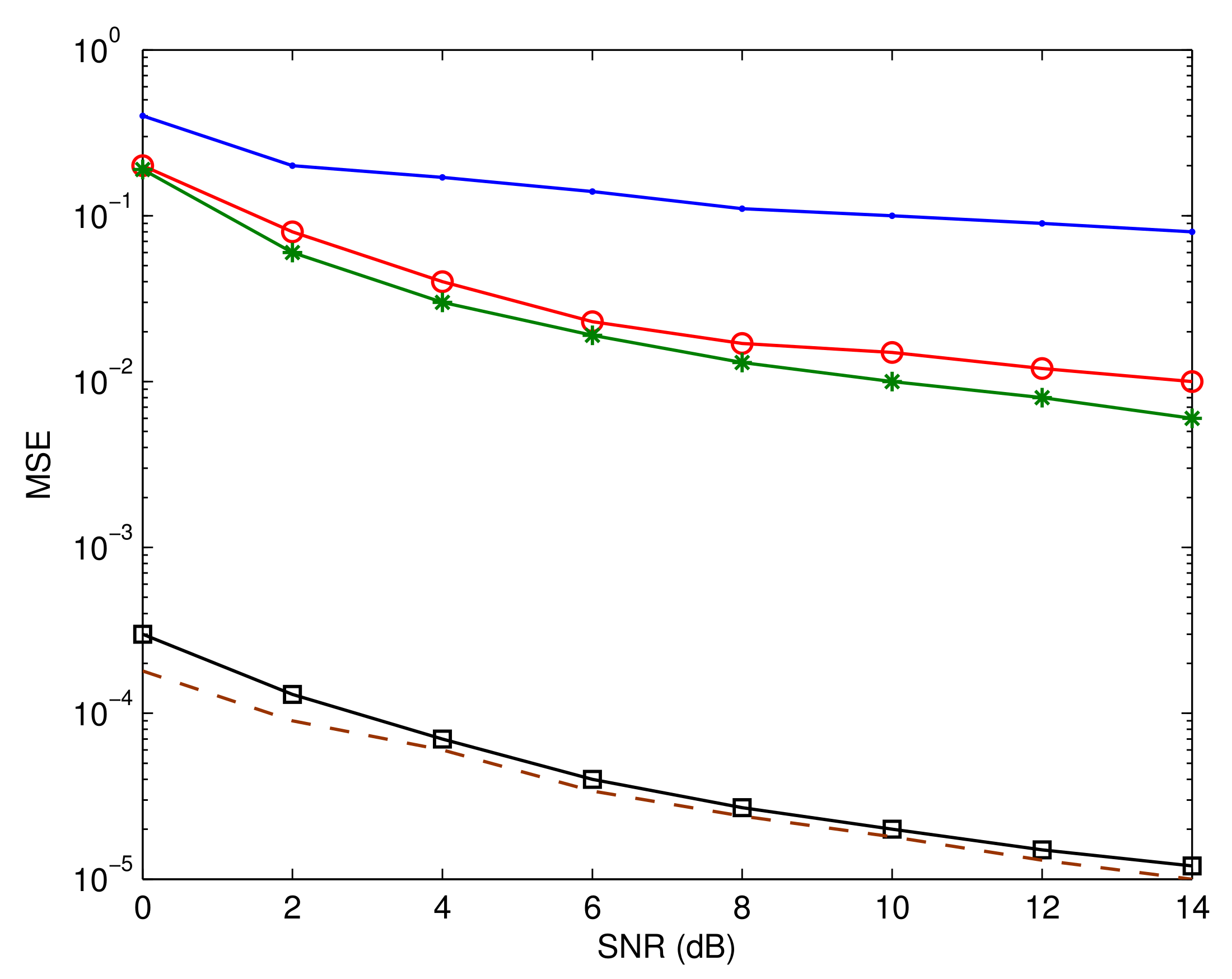

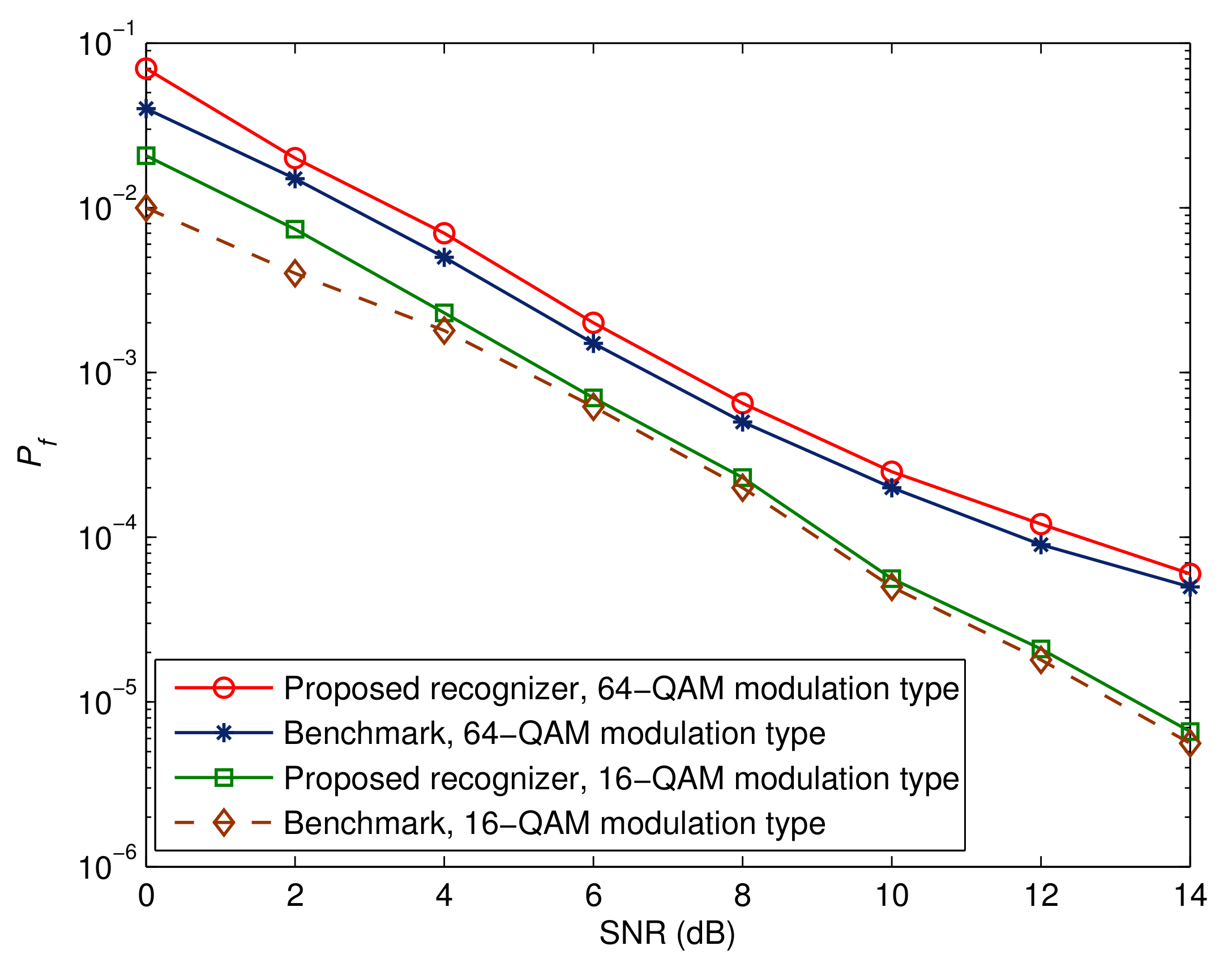


Disclaimer/Publisher’s Note: The statements, opinions and data contained in all publications are solely those of the individual author(s) and contributor(s) and not of MDPI and/or the editor(s). MDPI and/or the editor(s) disclaim responsibility for any injury to people or property resulting from any ideas, methods, instructions or products referred to in the content. |
© 2023 by the authors. Licensee MDPI, Basel, Switzerland. This article is an open access article distributed under the terms and conditions of the Creative Commons Attribution (CC BY) license (https://creativecommons.org/licenses/by/4.0/).
Share and Cite
Marey, M.; Sedik, A.; Mostafa, H. SFBC Recognition over Orthogonal Frequency Division Multiplexing Schemes in the Presence of Inphase and Quadrature Phase Discrepancies for Cognitive Radio Applications. Sensors 2023, 23, 5267. https://doi.org/10.3390/s23115267
Marey M, Sedik A, Mostafa H. SFBC Recognition over Orthogonal Frequency Division Multiplexing Schemes in the Presence of Inphase and Quadrature Phase Discrepancies for Cognitive Radio Applications. Sensors. 2023; 23(11):5267. https://doi.org/10.3390/s23115267
Chicago/Turabian StyleMarey, Mohamed, Ahmed Sedik, and Hala Mostafa. 2023. "SFBC Recognition over Orthogonal Frequency Division Multiplexing Schemes in the Presence of Inphase and Quadrature Phase Discrepancies for Cognitive Radio Applications" Sensors 23, no. 11: 5267. https://doi.org/10.3390/s23115267
APA StyleMarey, M., Sedik, A., & Mostafa, H. (2023). SFBC Recognition over Orthogonal Frequency Division Multiplexing Schemes in the Presence of Inphase and Quadrature Phase Discrepancies for Cognitive Radio Applications. Sensors, 23(11), 5267. https://doi.org/10.3390/s23115267





